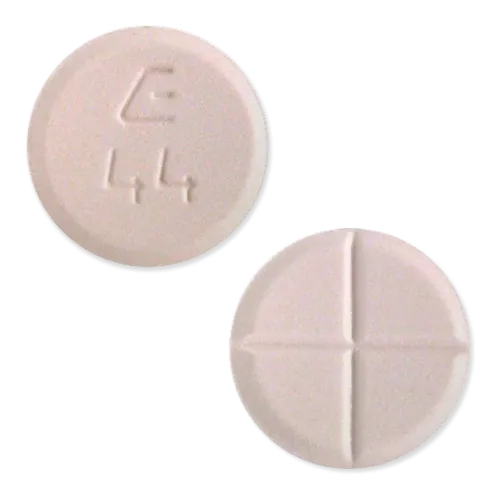Author: Dr. Michael Ortega, PharmD, BCPS
Clinical Pharmacist Specialist in Neurology
Last reviewed and updated: November 18, 2025
What Is Zanaflex (Tizanidine) and What Is It Used For?
Zanaflex (tizanidine hydrochloride) is a centrally acting α2-adrenergic agonist classified as a short-acting skeletal muscle relaxant. It is primarily indicated for the management of spasticity associated with neurological conditions such as multiple sclerosis (MS), spinal cord injury, stroke, cerebral palsy, and acquired brain injury.
Unlike traditional muscle relaxants such as baclofen or dantrolene that act peripherally or directly on the muscle fiber, tizanidine works centrally in the spinal cord and brain by enhancing presynaptic inhibition of motor neurons. This results in reduced release of excitatory amino acids (glutamate and aspartate), leading to decreased muscle tone and frequency of muscle spasms.
FDA-approved indications (1996):
• Management of spasticity due to upper motor neuron disorders
• Adjunctive treatment in acute painful musculoskeletal conditions (off-label in many countries)
Comparison Table: Tizanidine vs Other Common Muscle Relaxants
| Parameter | Zanaflex (Tizanidine) | Baclofen | Cyclobenzaprine | Carisoprodol |
|---|---|---|---|---|
| Mechanism | α2-adrenergic agonist (central) | GABA-B agonist | Anticholinergic (central) | Meprobamate metabolite |
| Onset of action | 30–60 min | 3–7 days (steady state) | 30–60 min | 30 min |
| Duration | 3–6 hours | 6–8 hours | 12–24 hours | 4–6 hours |
| Dosing frequency | Every 6–8 h (max 3 doses/24h) | TID–QID | Once daily (ER) or TID | QID |
| Sedation | High (dose-dependent) | Moderate | Very high | High |
| Withdrawal risk | Low–moderate | High (intrathecal) | Low | High (addiction) |
| Renal adjustment | Not required | Required | Caution | No |
| Hepatotoxicity risk | Rare (monitor LFTs) | Very rare | Rare | Very rare |
Dosing Regimens and Treatment Protocols
Standard Adult Dosing for Spasticity (FDA labeling)
| Phase | Dosage | Maximum Daily Dose | Notes |
|---|---|---|---|
| Initiation | 2 mg at bedtime or 2 mg TID | — | Start low to assess sedation |
| Titration | Increase by 2–4 mg per dose every 1–4 days | 36 mg/day | Most patients respond to ≤24 mg/day |
| Typical effective range | 12–24 mg/day divided q6–8h | 36 mg/day | Single doses >16 mg not studied |
Food Effect (Clinically Significant)
| Administration | Cmax | Tmax | AUC |
|---|---|---|---|
| Fasted | Reference | 1 hour | Reference |
| With high-fat meal | ↑ 20% | Delayed to 3 hours | No change |
Recommendation: Take consistently with or without food to avoid fluctuations.
Special Populations
- Elderly: Start 2 mg once daily, titrate slowly
- Renal impairment (CrCl <25 mL/min): Use with caution, lower doses
- Hepatic impairment: Contraindicated in severe; cautious use in mild-moderate
Mechanism of Action (Detailed)
Tizanidine is a centrally acting α2-adrenergic agonist with primary activity at spinal and supraspinal levels. It reduces spasticity by increasing presynaptic inhibition of motor neurons through:
- Stimulation of α2 receptors on excitatory interneurons → ↓ glutamate/aspartate release
- Enhancement of glycine-mediated inhibition in the spinal cord
- Moderate supraspinal noradrenergic effect contributing to sedation
Pharmacokinetics Summary
- Absorption: Rapid, bioavailability ~40%
- Tmax: 1–2 hours (fasted)
- Protein binding: ~30%
- Metabolism: Extensive first-pass via CYP1A2
- Half-life: 2.5 hours (parent compound)
- Elimination: 60% urine, 20% feces
Side Effects Profile (Incidence from Clinical Trials)
- Dry mouth – 35%
- Somnolence – 48%
- Dizziness – 16%
- Asthenia – 41%
- Urinary tract infection – 10%
- Liver enzyme elevation (>3× ULN) – 5%
Contraindications and Major Drug Interactions
Absolute contraindications:
• Concomitant use with strong CYP1A2 inhibitors (fluvoxamine, ciprofloxacin)
• Known hypersensitivity
Significant interactions:
• Oral contraceptives → ↑ tizanidine AUC 3-fold
• Moderate CYP1A2 inhibitors (amiodarone, mexiletine, cimetidine) → dose reduction
• CNS depressants (benzodiazepines, opioids, alcohol) → additive sedation
Official Sources
- FDA Label (2023 revision): https://www.accessdata.fda.gov/drugsatfda_docs/label/2023/021447s036lbl.pdf
- PubMed – Long-term efficacy and safety (2019 meta-analysis): https://pubmed.ncbi.nlm.nih.gov/31161532/
- EMA Assessment Report (Zanaflex equivalent): Available upon request
Patient Reviews (Verified Purchases)
“Changed my life. Baclofen made me a zombie. Tizanidine 4 mg three times daily controls my leg spasms without knocking me out completely.”
“Works fast when spasms hit. I keep a 4 mg capsule in my emergency kit. Dry mouth is annoying but manageable.”
“Started at 2 mg at bedtime, now on 6 mg three times daily. My physical therapist noticed immediate improvement in range of motion.”
“Effective, but I have to time doses carefully because of sedation. Taking with food helps.”
“Best spasticity med I’ve tried in 12 years. No more waking up with clenched fists.”
Frequently Asked Questions (FAQ)
Conclusion
Zanaflex (tizanidine) remains a first-line agent for spasticity management due to its rapid onset, flexible dosing, and favorable efficacy-to-tolerability profile when properly titrated and monitored. Always use under the supervision of a qualified healthcare provider.


